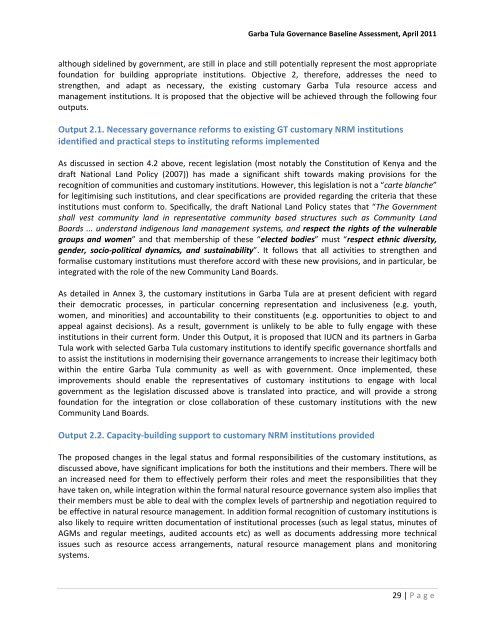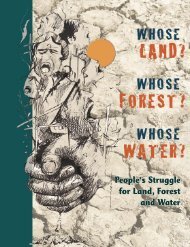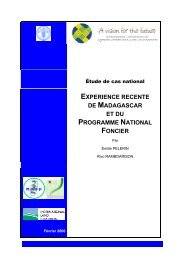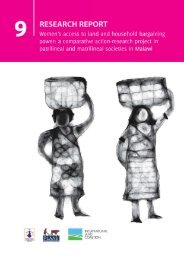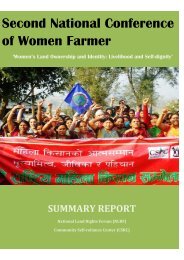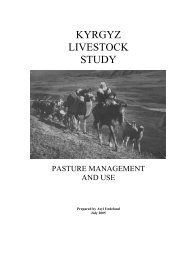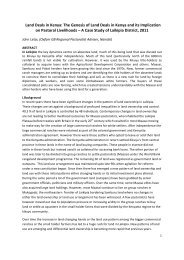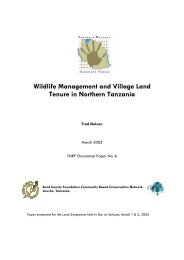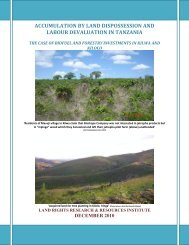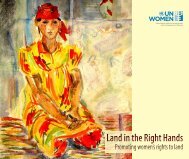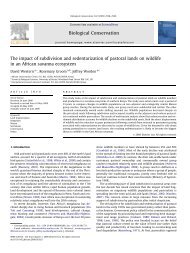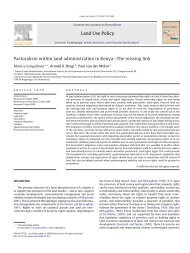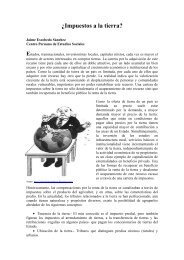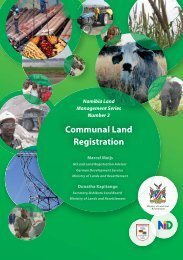Garba Tula Governance Assessment Final Report ... - Land Portal
Garba Tula Governance Assessment Final Report ... - Land Portal
Garba Tula Governance Assessment Final Report ... - Land Portal
Create successful ePaper yourself
Turn your PDF publications into a flip-book with our unique Google optimized e-Paper software.
<strong>Garba</strong> <strong>Tula</strong> <strong>Governance</strong> Baseline <strong>Assessment</strong>, April 2011<br />
although sidelined by government, are still in place and still potentially represent the most appropriate<br />
foundation for building appropriate institutions. Objective 2, therefore, addresses the need to<br />
strengthen, and adapt as necessary, the existing customary <strong>Garba</strong> <strong>Tula</strong> resource access and<br />
management institutions. It is proposed that the objective will be achieved through the following four<br />
outputs.<br />
Output 2.1. Necessary governance reforms to existing GT customary NRM institutions<br />
identified and practical steps to instituting reforms implemented<br />
As discussed in section 4.2 above, recent legislation (most notably the Constitution of Kenya and the<br />
draft National <strong>Land</strong> Policy (2007)) has made a significant shift towards making provisions for the<br />
recognition of communities and customary institutions. However, this legislation is not a “carte blanche”<br />
for legitimising such institutions, and clear specifications are provided regarding the criteria that these<br />
institutions must conform to. Specifically, the draft National <strong>Land</strong> Policy states that “The Government<br />
shall vest community land in representative community based structures such as Community <strong>Land</strong><br />
Boards ... understand indigenous land management systems, and respect the rights of the vulnerable<br />
groups and women” and that membership of these “elected bodies” must “respect ethnic diversity,<br />
gender, socio-political dynamics, and sustainability”. It follows that all activities to strengthen and<br />
formalise customary institutions must therefore accord with these new provisions, and in particular, be<br />
integrated with the role of the new Community <strong>Land</strong> Boards.<br />
As detailed in Annex 3, the customary institutions in <strong>Garba</strong> <strong>Tula</strong> are at present deficient with regard<br />
their democratic processes, in particular concerning representation and inclusiveness (e.g. youth,<br />
women, and minorities) and accountability to their constituents (e.g. opportunities to object to and<br />
appeal against decisions). As a result, government is unlikely to be able to fully engage with these<br />
institutions in their current form. Under this Output, it is proposed that IUCN and its partners in <strong>Garba</strong><br />
<strong>Tula</strong> work with selected <strong>Garba</strong> <strong>Tula</strong> customary institutions to identify specific governance shortfalls and<br />
to assist the institutions in modernising their governance arrangements to increase their legitimacy both<br />
within the entire <strong>Garba</strong> <strong>Tula</strong> community as well as with government. Once implemented, these<br />
improvements should enable the representatives of customary institutions to engage with local<br />
government as the legislation discussed above is translated into practice, and will provide a strong<br />
foundation for the integration or close collaboration of these customary institutions with the new<br />
Community <strong>Land</strong> Boards.<br />
Output 2.2. Capacity-building support to customary NRM institutions provided<br />
The proposed changes in the legal status and formal responsibilities of the customary institutions, as<br />
discussed above, have significant implications for both the institutions and their members. There will be<br />
an increased need for them to effectively perform their roles and meet the responsibilities that they<br />
have taken on, while integration within the formal natural resource governance system also implies that<br />
their members must be able to deal with the complex levels of partnership and negotiation required to<br />
be effective in natural resource management. In addition formal recognition of customary institutions is<br />
also likely to require written documentation of institutional processes (such as legal status, minutes of<br />
AGMs and regular meetings, audited accounts etc) as well as documents addressing more technical<br />
issues such as resource access arrangements, natural resource management plans and monitoring<br />
systems.<br />
29 | P a g e


